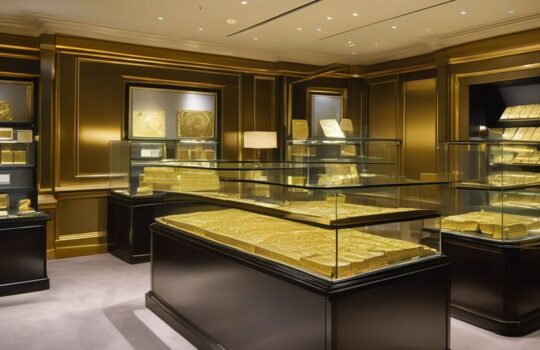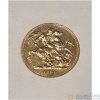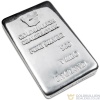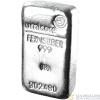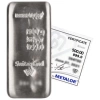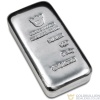A Guide to Selling Silver Bars in the UK: What You Need to Know
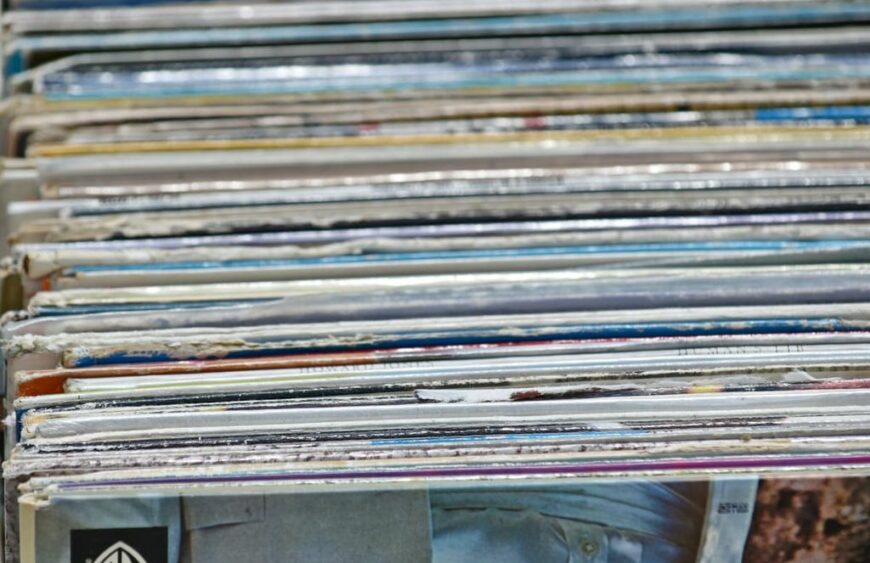
Selling silver bars in the UK can be a lucrative venture, but it requires careful consideration and knowledge of the market, legal regulations, and practical aspects such as storage and transportation. This guide will provide you with essential information on how to navigate the process of selling silver bars, ensuring that you make informed decisions and achieve the best possible outcome.
Key Takeaways
- Understand the current market trends and demand for silver bars before making a decision to sell.
- Evaluate the purity and weight of your silver bars to determine their value accurately.
- Choose a reputable and trustworthy buyer who offers fair prices and complies with hallmarking regulations.
- Be aware of the tax implications and hallmarking regulations when selling silver bars in the UK.
- Ensure secure storage and reliable transportation options to safeguard your silver bars during the selling process.
Selling Silver Bars: A Step-by-Step Guide

Understanding the Market
Before venturing into the sale of silver bars, it is crucial to grasp the dynamics of the precious metals market. The price of silver fluctuates daily, influenced by global economic factors, supply and demand, and investor behaviour. To make informed decisions, sellers should track silver prices and market trends regularly.
When evaluating where to sell your silver bars, consider the reputation and reliability of potential buyers. Marketplaces vary from online platforms to local dealers and private collectors. Each has its own set of advantages and challenges:
- Online platforms offer convenience and a broad audience but may come with higher competition and fees.
- Local dealers provide personal service and immediate payment but might offer lower prices.
- Private collectors can pay a premium for certain items but are harder to find and require careful vetting.
It’s essential to compare different selling options and choose one that aligns with your expectations and the level of risk you are willing to take.
Remember, knowledge is power in the silver market. The more you understand about the current market conditions and the various selling avenues, the better positioned you will be to get a fair price for your silver bars.
Evaluating Your Silver Bars
When it comes to selling your silver bars, understanding their true value is crucial. Start by verifying the authenticity of your silver bars; look for hallmarks or stamps that indicate weight, purity, and the mint or refinery of origin. Reputable dealers will always provide proof of authenticity, ensuring that your bars contain verified fine silver.
Before approaching potential buyers, research the market thoroughly. Compare prices from different dealers, taking into account factors such as weight, brand, design, and current market conditions. Remember, the premium over the spot price of silver reflects the production, distribution, and marketing costs associated with the silver bar and can vary significantly.
It’s essential to be well-informed about the market value of your silver bars to negotiate effectively with buyers.
Here’s a quick checklist to help you evaluate your silver bars:
- Confirm the weight and purity of each bar.
- Check for a recognised hallmark or stamp.
- Assess the condition of the bar; scratches or damage can affect value.
- Determine the brand and design influence on the premium.
- Understand how market conditions may impact the price.
Choosing the Right Buyer
When it comes to selling your silver bars, selecting the right buyer is crucial for a satisfactory transaction. Ensure you receive a fair price by considering buyers who offer market value and have a transparent pricing structure. A reputable buyer will not only provide a fair price but also a secure and efficient transaction process.
Reputation and reliability are key when choosing where to sell your silver bars. Look for buyers with positive reviews and a strong presence in the market. For instance, a bullion dealer located in Warrington offers quick cash for your gold and silver bullion bars, boasting that they pay the best prices locally.
- Research potential buyers
- Compare their offered prices
- Check for customer reviews
- Confirm their payment and transaction processes
It’s advisable to sell back to the outlet where you originally purchased your silver bars if possible, as this can add certainty and value to the transaction.
Remember, the right buyer is not just about the highest price, but also about the ease of transaction, the level of customer service, and the overall trustworthiness of the business.
Legal Considerations for Selling Silver Bars

Tax Implications
When selling silver bars in the UK, it’s crucial to understand the tax implications involved. Capital Gains Tax (CGT) is a key consideration for investors. Silver, like gold, is subject to CGT, which means that any profit made from the sale of your silver bars could be taxed. However, there are exceptions to this rule, such as certain coins that qualify as legal tender and are produced by The Royal Mint.
Capital gains on silver are calculated by subtracting the purchase price from the selling price. It’s important to note that if you sell your silver at a loss, you may be able to carry this loss forward to offset against future capital gains. This can be particularly relevant if you’re engaged in other investments that yield profits.
Remember, the tax situation can be complex and varies depending on individual circumstances. Always seek professional advice to ensure compliance with current tax laws.
Here is a simple breakdown of when CGT may apply:
- You sell silver bars for more than you paid for them.
- You gift the silver bars, and they are worth more than when you acquired them.
- You exchange the silver bars for something of higher value.
To ensure you’re making informed decisions, keep detailed records of all transactions related to your silver investments.
Hallmarking Regulations
In the UK, the Hallmarking Act of 1973 mandates that all silver items, including bars, must bear official hallmarks as a sign of quality assurance. These hallmarks, often found in inconspicuous areas, serve as a guarantee of the silver’s purity, origin, and the maker’s mark. Learning to interpret these marks is akin to deciphering a secret code that reveals the item’s history and authenticity.
For silver bars, hallmarking typically includes the maker’s mark, the traditional fineness symbol, the millesimal fineness number, and the assay office mark. Notably, certain items such as coins and investment bars are exempt from these requirements. It’s crucial for sellers to ensure their silver bars meet these standards before offering them for sale.
While the UK has a stringent hallmarking system, other countries may follow less standardised approaches. The International Hallmark Convention, however, is working towards a common hallmarking system across participating nations.
Remember, a hallmark is more than just a mark; it’s a pedigree of your silver bar. Here’s a quick reference to understand the components of a Full UK Hallmark:
- Maker: The individual or company that manufactured the item.
- Traditional Fineness: A symbol indicating the type of precious metal.
- Millesimal Fineness: A numerical mark denoting the percentage of pure silver.
- Assay Office: The office where the item was tested and marked.
- Date Letter Mark: The year of the item’s production.
Storage and Transportation of Silver Bars

Secure Storage Options
When considering the storage of silver bars, security and preservation are paramount. Investors must ensure their assets are protected from theft and environmental damage. For optimal security, many choose to store their silver in vaults, which offer robust protection and are often equipped with advanced security features such as 24/7 surveillance and armed guards. These facilities also provide full replacement insurance and are subject to regular verification by independent auditors.
It is essential to select a storage solution that is fully allocated and segregated. This guarantees that the silver bars are individually assigned and stored separately from others, minimising risk and ensuring easy access for future sale or delivery. Notably, storage options are not limited to physical possession; online vaults present a convenient alternative, allowing investors to store their silver remotely in some of the world’s most secure locations.
The choice of storage should reflect the investor’s need for accessibility and peace of mind. Whether opting for a physical vault or an online service, the investor retains control over the location and security of their investment.
For those who prefer to manage their silver bars personally, specialised storage cases are available. According to PhysicalGold.com, sturdy plastic or wood cases can prevent surface damage when stacking and moving the bars, with interlocking cases providing additional security for each individual bar.
Shipping and Delivery
When it comes to shipping and delivery of silver bars, ensuring the safety and security of your investment is paramount. Choose a delivery method that offers full insurance and tracking capabilities to safeguard against loss or theft. Within the UK, options such as Royal Mail 2nd Class are available for orders under \
Testing the Purity of Silver Bars

Magnet Test
The magnet test is a simple yet effective way to begin assessing the purity of your silver bars. Genuine silver will not be attracted to the magnet, indicating that it is a non-ferrous metal. This test is particularly handy for items like jewellery or coins, where you can easily bring a magnet close to the surface without causing damage.
It’s crucial to avoid scratching delicate surfaces, so maintain a slight distance when performing the test.
While the magnet test can quickly signal if an item is likely not pure silver, it should not be the sole method of evaluation. Silver-plated items or alloys might not be magnetic, yet they are not composed of solid silver. Therefore, it’s beneficial to combine this test with additional assessments for better accuracy.
Here is a step-by-step guide to performing the magnet test:
- Hold the Magnet Close: Gently bring the magnet close to the item without touching it.
- Observe the Reaction: If there is no attraction, it suggests the item may be genuine silver.
- Combine with Other Tests: Use further testing methods to confirm the purity of the silver.
Acid Test
The acid test is a traditional method of verifying the authenticity of silver bars. Safety should always be your first priority when conducting this test due to the corrosive nature of nitric acid. It’s essential to wear protective gear, such as gloves and safety glasses, and to perform the test in a well-ventilated area.
Apply a small drop of nitric acid to a less visible part of the silver bar using a pipette or cotton swab. A genuine silver bar will react by showing a milky white colour, indicating the presence of pure silver. Be mindful that this test will leave a mark on the silver bar and should be used as a last resort.
Here are the colour changes to look out for during the test:
- Creamy White: Pure silver.
- Green: Silver-plating over a base metal.
- Red: Presence of copper.
Remember, no single test can provide complete assurance. It’s recommended to use multiple methods to confirm the purity of your silver bars.
Assay Office Verification
When the simpler home tests are not sufficient, or when dealing with high-value silver bars, the Assay Office verification becomes essential. Assay certificates are crucial documents that confirm the purity and weight of your silver bars. These certificates are issued by independent assayers who employ advanced technology, such as the SkyRay EDX 3000 Plus Spectrometer and the Niton XL2 precious metals analyzer, to ensure accurate results.
For those who require a certified assessment, perhaps for legal or insurance purposes, or when handling valuable or sentimental items, the Assay Office provides a level of authority and trust that cannot be matched by home testing methods. It’s a service that offers peace of mind, especially when the authenticity of the silver is in question.
The Assay Office’s verification process is a safeguard for both buyers and sellers, ensuring that the transaction is based on the true value of the silver bars.
If you’re considering selling your silver bars, remember that the presence of an assay certificate can significantly enhance their marketability. Buyers are more likely to trust and value bars that have been independently verified. Below is a list of reasons to seek professional verification:
- Uncertain Identification: If you’re unsure about the results of DIY tests.
- Valuable or Sentimental Items: To ensure accurate identification and valuation.
- Legal or Insurance Purposes: When a certified assessment is required.
Conclusion
Selling silver bars in the UK requires careful consideration and understanding of the market. From choosing the right buyer to knowing the specifications and terms of sale, sellers need to be well-informed. Whether selling silver bars or coins, it’s important to be aware of the payment and identification requirements. Additionally, understanding the hallmarking process and conducting tests for authenticity are crucial steps in the selling process. With the right knowledge and information, sellers can navigate the process of selling silver bars with confidence and security.
Frequently Asked Questions
What are the tax implications of selling silver bars in the UK?
Selling silver bars in the UK may have tax implications, and it’s important to understand the capital gains tax regulations and any applicable exemptions.
How can I test the purity of my silver bars at home?
You can test the purity of silver bars at home using methods such as the magnet test, acid test, or by seeking verification from an assay office.
What are the hallmarking regulations for silver bars in the UK?
Hallmarking regulations in the UK require silver bars to display specific marks including ‘Maker’, ‘Traditional Fineness’, ‘Millesimal Fineness’, ‘Assay office’, and ‘Date Letter Mark’ to ensure authenticity and quality.
What are the secure storage options for silver bars?
There are various secure storage options available for silver bars, including segregated, allocated, or pooled storage, each with its own benefits and considerations.
How can I ensure the safe transportation of silver bars?
When transporting silver bars, it’s important to consider secure shipping and delivery options to safeguard the valuable assets during transit.
Can I sell part of my silver bar collection, or do I have to sell the entire bar in one transaction?
You have the flexibility to sell part of your silver bar collection, allowing you to capitalise on market opportunities and sell according to your preferences and needs.


